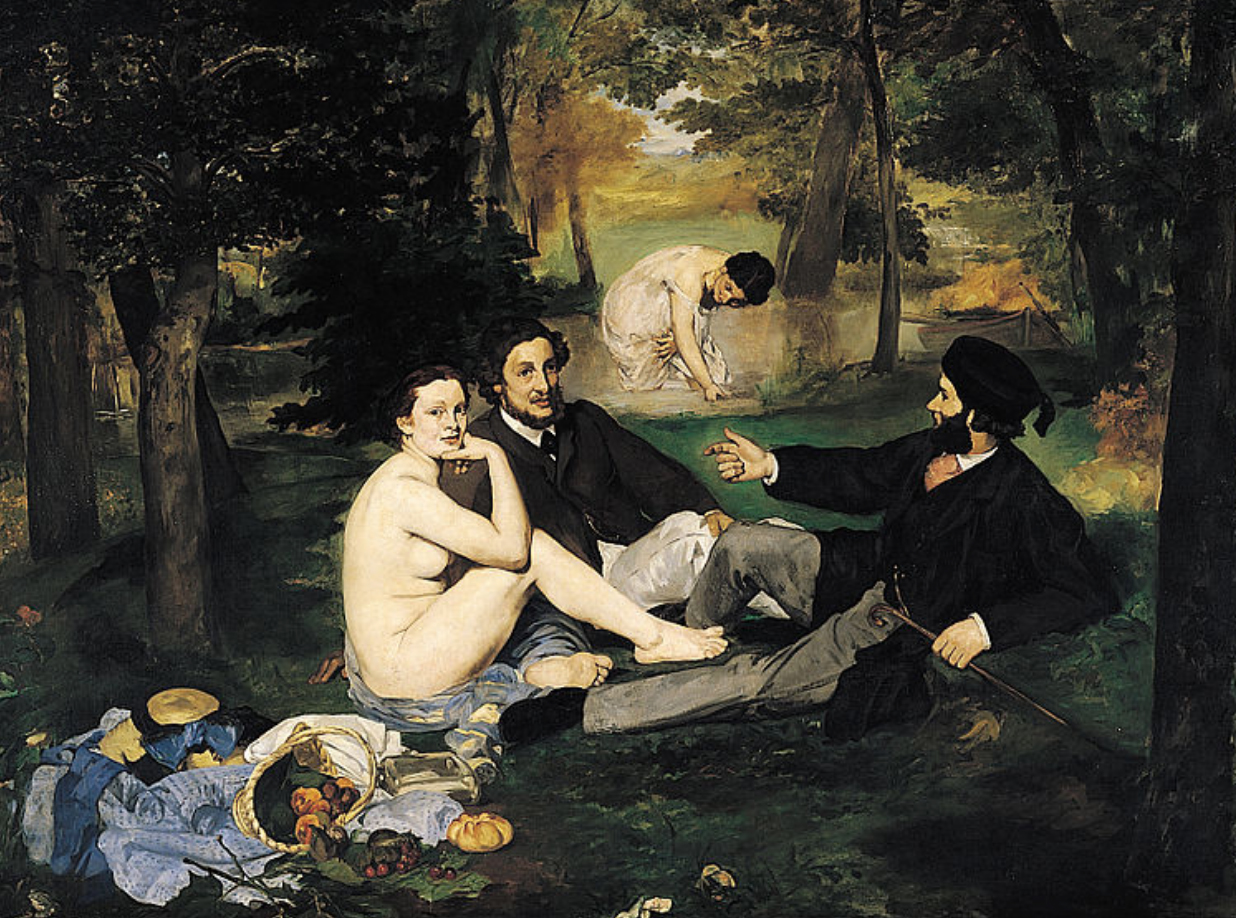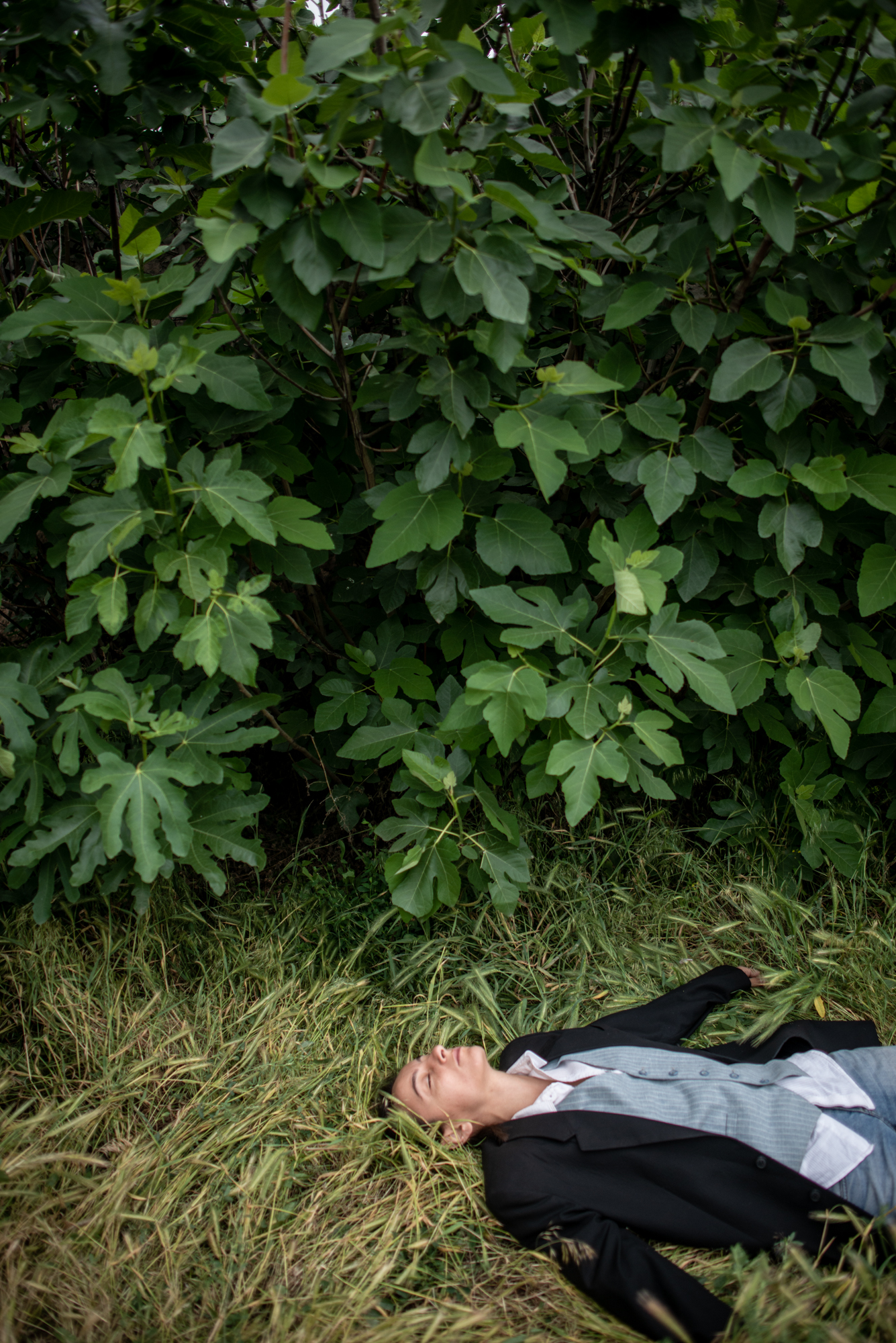(THIS ARTICLE IS MACHINE TRANSLATED by Google from Norwegian)
Display:
Anush Babajanyan, Jessica Dimmock, Linda Bournane Engelberth, Ilvy Njiokiktjien, Nicole Sobecki, Maggie Steber and Sara Terry:
Her Take: (Re) thinking Masculinity
A year after the idea arose, the photo agency VII recently presented the multifaceted exhibition Her Take: (Re) thinking Masculinity at the 7th Photoville Biennial in New York. Photoville, which consists of 65's former shipping containers refurbished and located under the Brooklyn Bridge, formed from 13. to 23. The September scene for a mass pattern of photographs, divided into a total of 90 exhibitions. (Re) thinking Masculinity is already invited to attend 2020 Photoforum Pasquart in Biel, Switzerland.
The male gaze
Each photographer had chosen his or her personal approach to the subject. Sara Terry uses new interpretation of Édouard Manet's famous painting Lunch in the green to turn on the gender roles both in terms of who's gaze and who is depicted: Manet's disguised women have been replaced with men in Terry's work. In the catalog text, the photographer elaborates that her interpretation is based on both the work's place in art history, feminist criticism and the cultural context. The group of men and women on picnics in the wild is apparently in the middle of a conversation. Equally, none of them look right at each other. Where Manet's naked foreground woman looks directly at the spectator, Terry's male counterpart looks shyly into the ground. The balance of power has changed. Terry's naked man seems even more dressed up than Manet's naked woman, where he sits with his eye-catching tattoos in the middle of a rough urban landscape. The shyness of his distant gaze reinforces the impression of vulnerability.


Where Manet's naked foreground woman looks directly at the spectator, Terry's male counterpart looks shyly into the ground.
An attentive gaze is in many cultures considered to be a sexual invitation, therefore the woman's gaze steers down, to maintain her reverence. Now it's the man's turn. Terry takes a close look at the story of power and gender as MeToo movement When she now wants to invite men into a discourse, she speaks for the entire VII women's group.
Exhibition text as key
Several of the photographers have incorporated exhibition texts that not only enrich, but turn the spectator experience of the photo works on their heads: Nicole Sobecki in her part Afroman depicted a man tenderly holding his little baby, where the warm proximity is highlighted by a background in earth tones. Maggie Steber writes that before photography, she talked with each of the portraits about masculinity, gender traditions and the man's challenges. A tear down a man's cheek, a close father's relationship to his own child – with quiet means depicts a powerful break with the traditional African male role.


The multifaceted heaviness Steber's dialogue has given her pictures can also be found in Jessica Dimmock's works. She has photographed older trans people in environments where they previously had to hide their feminine side. What surrounds the depicted person is as important as he or she himself: The old-fashioned living room with embroidered pillows and the conventionally housewife-clad both point to previously unfulfilled dreams and longings. An older, long-haired, styled trance becomes doubly vulnerable in the rough, inhospitable environment he finds himself in.
In her photo series, Jessica Dimmock touches on the taboo of sexuality, orientation and old age, while Anush Babajanyan explores "what it's like to be in their shoes" – that is, the shoes of men who characterized her – by posing in their borrowed clothes. In her most moving image, she is thrown into tall, succulent grass at the bottom of the composition, while the rest of the surface is filled with lush green wood – and more grass.
Mystery and relationships
What is most striking is the aesthetic. In Stebers The Secret Garden of Lily LaPalma the beauty of the portrait "Leonard Gloating with Chrisantheums" has transcended into a visual delight; a floating harmony between blurred flowers and a floating face. Behind is the contours of the submerged naked upper body. The choice of depth of field centers the focus on the eyes and mouth. Several men are photographed with the flowers that Steber associates with them. The men are picked out on their beauty beyond the exterior, it is theirs person which fascinates the photographer.
Several things remain: men as a beauty object, as a parent, the man's view of himself and his own appearance and orientation, the man who will be defined as something more or something completely different. The man looked through the woman's gaze.
Likewise, Norwegian-Algerian Linda Bournane Engelberth is attracted to the interior in her exploration of the reality of non-binary – that is, people who experience freedom from a specific gender identity. The expression rests on the portraits' own power, and Engelberth's photographic choices are sober, while the images have their own brilliance – as if the photographers are surrounded by golden light even though the photographs are black and white.
Ilvy Njiokiktjien focuses on relationships – between people who are and to those who have passed away – including photos of younger widowers with their children. These photographs are easy to fall in love with: fathers who play the role of both mother and father in play and everyday life with their children. A hand on a thigh, a daughter over a shoulder. A face that lights up behind two daughters who have both made barbs of their long, light hair.

Echo and cooperation
The photographers have had conversations and inspired each other during the work on the exhibition. Several things are left in the various series: the man as a beauty object, the man as the parent, the man's view of himself and his own appearance and orientation, the man who will be defined as something more or something completely different. The man looked through the woman's gaze. The seven women behind the exhibition want to create debate and conversation between men and women. The photography agency VII has grown to lean on each other's strengths and skills – at the same time, not everything is as rosy: these photographers are in a male-dominated world with the associated macho mentality. The proportion of women photographing is 15 percent, according to the British Journal of Photography's September issue. The industry needs change – not least because more women want to give photography new angles and other photographic stories.
The Photoville Biennial took place September 13-23 in New York.
The biennale consisted of 90 separate exhibitions and was supported by Fritt Ord, among others.



